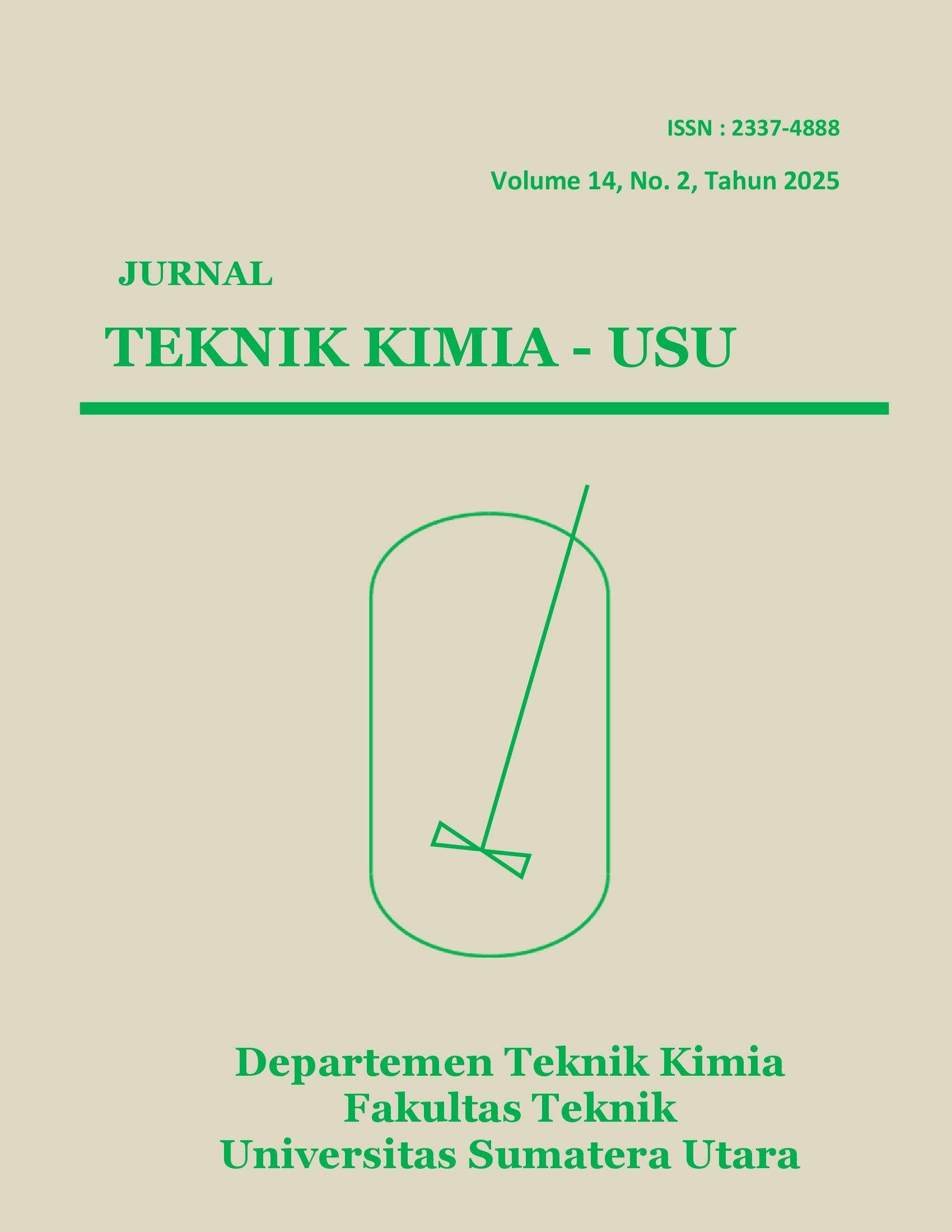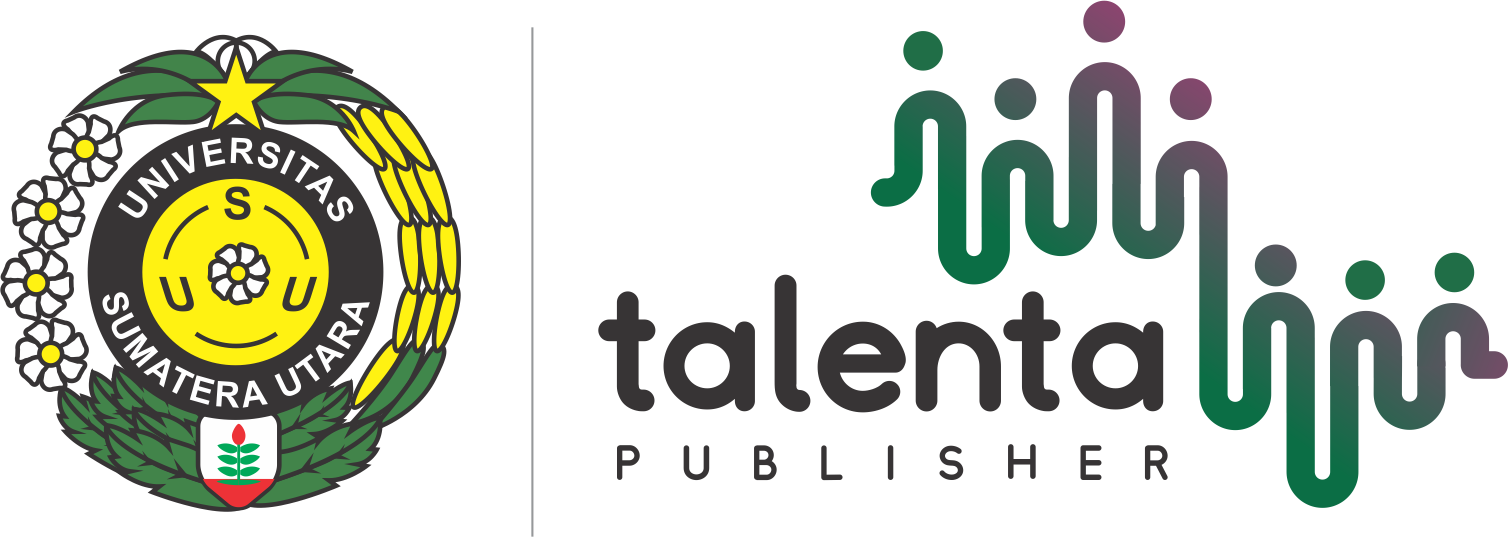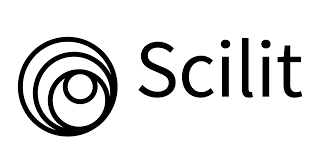Pengaruh Hydraulic Retention Time pada Proses Aklimatisasi Reaktor Nitrifikasi Biofilter dari Olahan Limbah Cair Industri Tahu
DOI:
https://doi.org/10.32734/jtk.v14i2.18609Keywords:
HRT, biofilter reactor, acclimatization, effluent, industry wasteAbstract
The characteristics of tofu wastewater in Polonia-Medan contain a high organic load and an acidity degree of between 4-5 so it needs to be treated appropriately. The initial processing technique has been carried out anaerobically, but the NH3-N content is still high so it is necessary to carry out a nitrification process. Biofilters are widely used as a medium for the growth of microorganisms in waste processing. Bio balls as a medium for the growth of microorganisms have been previously carried out in anaerobic processing of tofu wastewater. This bio ball biofilter is capable of providing optimal growth of microorganisms, so this research also uses bio balls as biofilter media. Aerobic process in the biofilter nitrification reactor with variations in hydraulic retention time (HRT) of 24, 12, 6 hours and substrate concentrations of 50% and 100% for the acclimatization process. Acclimatization shows that HRT influences the acclimatization process to variations in substrate concentration. The highest removal process results were at 24 hour HRT, 100% substrate concentration, which resulted in NH3-N removal of 86.95%, COD 77.97% and nitrate production of 103.25 mg/L.
Downloads
References
N. Yanqoritha, M. Turmuzi, I. Irvan, F. Fatimah, dan D. Derlini, “The Effect of Organic Loading Rate Variation on Digestion of Tofu Wastewater using PVC Rings as Growth Media in a Hybrid UASB Reactor,” Orient. J. Chem., vol. 34, no. 3, hal. 1653–1657, Jun 2018, doi: 10.13005/ojc/340361.
I. Effendy, I. Putri, L. Lubis, F. Kesehatan, M. Institut, dan K. Helvetia, “Manajemen Tata Kelola Sampah Di Perkotaan ( Studi Kasus Di Kota Medan ),” Reg. Dev. Ind. Heal. Sci. Technol. Art Life, no. 2620–6048, hal. 152–160, 2018.
A. J. Effendi, R. R. Sandi, dan R. R. Effendi, A. J., & Sandi, “Removal of COD and NH3 from Produced Water using Modified Horizontal Subsurface Flow Constructed Wetlands (HSCW),” Reaktor, vol. 18, no. 3, hal. 166–170, 2018.
K. Anh, N.V., Nga, P.T., Thang, N.H., Tin, N.T., Ha, T.D., Nhue, T.H., Bach, L.T., Furukawa, “Nitrogen Ammonia Removal from Ground Water by Nitrification – Denitrification Process with a Novel Acryl Biofilm Carrier Material,” J. Environ. Prot. (Irvine,. Calif)., hal. 157–170, 2006.
F. Batubara, M. Turmuzi, I. Irvan, dan N. Yanqoritha, “Variations of Organic Loading Rate on Tofu Wastewater Degradation using Upflow Anaerobic Sludge Blanket Reactor by Modified Stover-Kincannon Model,” Int. J. Eng., vol. 36, no. 3, hal. 490–496, 2023, doi: 10.5829/IJE.2023.36.03C.08.
N. Yanqoritha, M. Turmuzi, Irvan, Fatimah, dan Derlini, “The Effect of Organic Loading Rate Variation on Digestion of Tofu Wastewater using PVC Rings as Growth Media in a Hybrid UASB Reactor,” Orient. J. Chem., vol. 34, no. 3, hal. 1653–1657, 2018, doi: 10.13005/ojc/340361.
N. Yanqoritha, M. Turmuzi, dan Derlini, “Acclimatization process of tofu wastewater on hybrid upflow anaerobic sludge blanket reactor using polyvinyl chloride rings as a growth medium,” AIP Conf. Proc., vol. 1840, 2017, doi: 10.1063/1.4982343.
P. Menteri et al., “Berita Negara,” no. 1815, 2014.
J. Sousa, K. Santos, I. Henrique, D. Brasil, dan E. Santos, “Anaerobic digestion and the denitrification in UASB reactor,” J. Urban Environ. Eng., vol. 2, no. 2, hal. 63–67, Des 2008, doi: 10.4090/juee.2008.v2n2.063067.
T. J. G. R. M., Maier, “Microorganisms and Organic Pollutants,” in Environmental Microbiology, 2015, hal. 377–413.
L.-Y. F. F., Liu, Z.-G., Song, Y.-X., Jiang, C.-K., C. hai, X.-L., Tang, C.-J., Chai, “The application of aged refuse in nitrification biofilter: Process performance and characterization,” Sci. Total Environ., vol. 657, hal. 1227–1236, 2019, doi: https://doi.org/10.1016/j.scitotenv.2018.12.020.
L. Y. Zhang., Xin, Wang., Miao, Hu., Pengfei, “Effect of hydraulic retention time (HRT) on the biodegradation of trichloroethylene wastewater and anaerobic bacterial community in the UASB reactor,” Appl. Microbiol. and Biotechnol, vol. 99, no. 4, hal. 19, 2015, doi: 10.1007/S00253-014-6096-6.
N. M. N. Yanqoritha, F. Piska, Betri Natasya Br Ginting, “Using biofilter aerobic reactor for optimizing the hydraulic loading rate in nitrification process for tofu-manufacturing wastewater management,” Adv. Environ. Technol., vol. 10, no. 4, hal. 326–338, 2024, doi: 10.22104/aet.2024.6855.1882.
M. B. S. K. Tomar, S. K. Padhi., P. K. Dikshit., S. Yadav., “Effect of hydraulic retention time on biological nutrients removal in an anaerobic membrane bioreactor treating low-strength drain wastewater,” Bioresour. Technol. Reports, vol. 24, 2023, doi: 10.1016/j.biteb.2023.101599.
S. S. N. S. N. K. Yea, S. R. S. Abdullah., N. I. Ismail., “Effect of HRTs on COD and Nutrient Removal in Sequencing Batch Reactor (SBR) Process,” J. Biochem. Microbiol. Biotechnol., vol. 10, no. SP2, hal. 29–39, 2022, doi: 10.54987/jobimb.v10isp2.726.
Bacta-Pur, “Nitrification/Denitrification in Wastewater Treatment.,” Nat. Solut., no. 12, hal. 1–4, 2012.
M. Kutz, Handbook of Environmental Engineering. 2018. doi: 10.1002/9781119304418.
S. Okabe, Y. Aoi, H. Satoh, dan Y. Suwa, “Nitrification in Wastewater Treatment,” Nitrification, hal. 405–433, 2014, doi: 10.1128/9781555817145.ch16.
A. Afrizal, F. Yandari, S. Kurniawan, N. Yanqoritha, F. Razi, dan Munajat, “Biogas production from tofu wastewater substrate using HUASB reactors with addition of trace metal,” IOP Conf. Ser. Mater. Sci. Eng., vol. 801, no. 1, 2020, doi: 10.1088/1757-899X/801/1/012059.
N. Yanqoritha, Kinerja Proses Reaktor Nitrifikasi Biofilter, Pertama. PT Amazing Life Publikasi, 2021.
N. Yanqoritha, Kuswandi, dan S. Sulhatun, “Evaluation of Kinetic Parameters of Nitrification Process in Biofilter System to Efluent Liquid Waste of Tofu Industry,” J. Penelit. Pendidik. IPA, vol. 8, no. 6, hal. 2744–2751, Des 2022, doi: 10.29303/jppipa.v8i6.2453.
N. Yanqoritha, F. Piska, B. N.B. Ginting, dan N. Mitha, “Using biofilter aerobic reactor for optimizing the hydraulic loading rate in nitrification process for tofu-manufacturing wastewater management,” Adv. Environ. Technol., vol. 10, no. 4, hal. 326–338, 2024, doi: 10.22104/aet.2024.6855.1882.
S. Ge, S. Wang, X. Yang, S. Qiu, B. Li, dan Y. Peng, “Detection of nitrifiers and evaluation of partial nitrification for wastewater treatment: A review,” Chemosphere, vol. 140, no. March, hal. 85–98, 2015, doi: 10.1016/j.chemosphere.2015.02.004.
M. C. De Prá, A. Kunz, M. Bortoli, T. Perondi, dan A. Chini, “Simultaneous removal of TOC and TSS in swine wastewater using the partial nitritation process,” J. Chem. Technol. Biotechnol., vol. 87, no. 12, hal. 1641–1647, 2012, doi: 10.1002/jctb.3803.
Y. X. Ren, L. Yang, dan X. Liang, “The characteristics of a novel heterotrophic nitrifying and aerobic denitrifying bacterium, Acinetobacter junii YB,” Bioresour. Technol., vol. 171, hal. 1–9, 2014, doi: 10.1016/j.biortech.2014.08.058.
Q. L. Zhang, Y. Liu, G. M. Ai, L. L. Miao, H. Y. Zheng, dan Z. P. Liu, “The characteristics of a novel heterotrophic nitrification-aerobic denitrification bacterium, Bacillus methylotrophicus strain L7,” Bioresour. Technol., vol. 108, hal. 35–44, 2012, doi: 10.1016/j.biortech.2011.12.139.
. Tchobanoglous, et.al, Wastewater Engineering Treatment and Reuse. McGraw Hill Series Companies, Inc., 2003.
D. Henze, M., Van Loosdrecht, M.C.M., Ekama, G.A., Brdjanovic, Biological Wastewater Treatment: Principles, Modelling and Design. IWA Publishing London, UK., 2008.
Downloads
Published
Issue
Section
License
Copyright (c) 2025 Jurnal Teknik Kimia USU

This work is licensed under a Creative Commons Attribution-ShareAlike 4.0 International License.

















